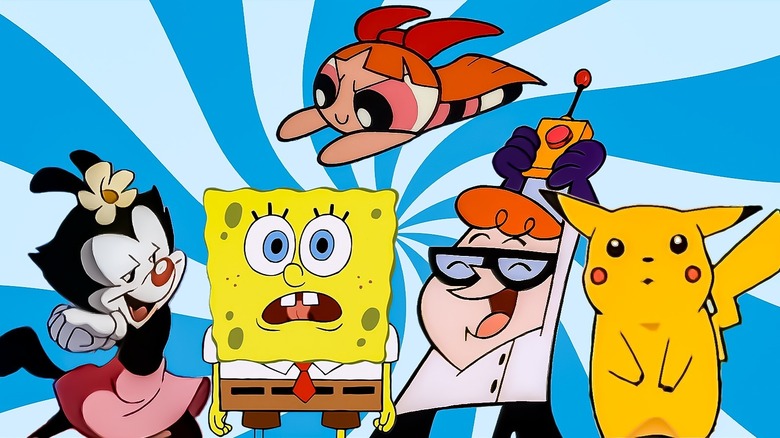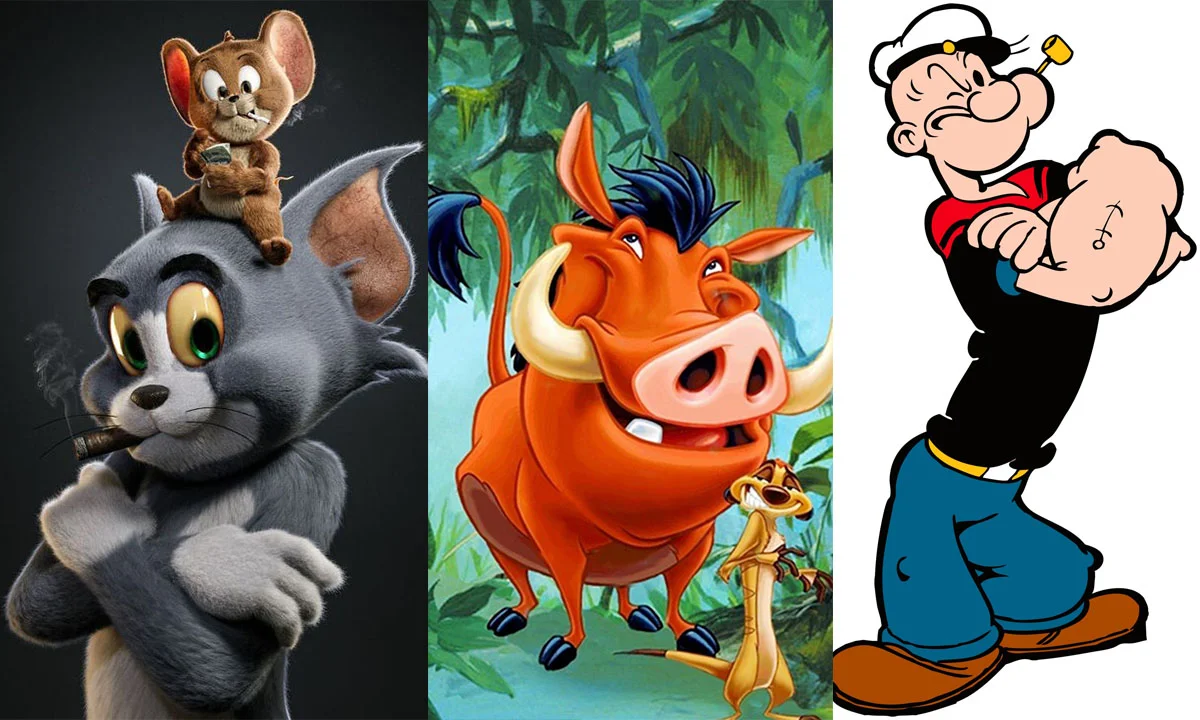Have you ever stopped to think about why some of your most beloved animated friends sport a rather prominent nose? It's quite a distinctive feature, isn't it? This particular characteristic, you know, can really make a character stand out in a crowd of many different faces. From classic storybook figures to modern-day animated heroes, the long nose in cartoons is a design choice that often holds more meaning than meets the eye.
This design element, a bit unusual perhaps, has been used for quite a long time in the world of animation. It can convey so much about a character's personality, their story, or even their role in a larger narrative. We're going to explore what makes these particular characters so memorable and why artists often choose this interesting facial feature for their creations. It's truly fascinating, how a simple design choice can have such a big impact, don't you think?
For those who enjoy a good animated tale, or simply appreciate the artistry that goes into making these visual stories, understanding the appeal of cartoons with long noses offers a fresh perspective. It’s a way, you see, to appreciate the little details that bring a character to life, making them feel more real and relatable to us. And, as a matter of fact, it's also about recognizing the clever ways creators tell stories without saying a single word.
Table of Contents
- The Appeal of a Distinctive Feature
- Historical Roots and Symbolism
- Why Do Cartoon Characters Have Big Noses?
- The Role of Character Design in Animation Networks
- The Evolution of Animated Noses
- The Enduring Charm of Long-Nosed Characters
- Frequently Asked Questions About Cartoon Noses
The Appeal of a Distinctive Feature
There's something quite captivating about a character with a really long nose. It's an instant identifier, isn't it? This particular physical trait helps them stand out from the many, many other characters you might see on screen. It’s almost like a signature, giving them a unique silhouette and making them instantly recognizable, which is pretty important for a cartoon character.
This design choice isn't just for looks, though. It often plays a big part in the character's personality or even their journey through the story. A long nose can suggest curiosity, a bit of a mischievous streak, or sometimes, it’s just a way to add some comedic flair. It's a visual cue, you know, that tells us something about who this character is before they even say a word.
Think about how many times you’ve seen a character with this feature and immediately remembered them. It’s a powerful tool for animators and storytellers, giving a character an immediate and lasting impression. So, in a way, these noses are more than just a part of their face; they're a part of their very identity, helping us remember them long after the show ends.
Historical Roots and Symbolism
The idea of a long nose in stories and art isn't new at all; it has roots going back many, many years. Before cartoons were even a thing, you'd find characters with exaggerated noses in folklore, plays, and even old paintings. These features often carried a lot of symbolic weight, suggesting different qualities or even moral lessons. It's fascinating, really, how these old ideas still pop up in our modern animated stories.
Sometimes, a long nose might represent wisdom or a keen sense of observation. Other times, it could suggest foolishness, or perhaps, a tendency to be a bit nosy, which is, you know, pretty fitting. The meaning often changes depending on the culture and the specific story being told. This rich history, you see, gives these cartoon noses a deeper layer of meaning that we might not even consciously pick up on.
It's not just a random design choice; there's often a reason, a tradition, or a cultural reference behind it. This tradition of using exaggerated features to convey meaning has, in some respects, been passed down through generations of artists. So, when you see a cartoon character with a long nose today, it's often a nod to these older storytelling methods, which is kind of cool when you think about it.
Pinocchio: The Ultimate Long Nose Story
When we talk about cartoons with long noses, the first character that usually comes to mind is Pinocchio. His nose, as we all know, grows longer every time he tells a lie, which is, you know, a pretty famous example of a nose with a purpose. This story, originally a book, became a very popular animated film, making his distinctive nose a worldwide symbol of honesty and the consequences of being untruthful.
Pinocchio’s nose is more than just a physical trait; it’s a direct visual representation of his moral journey. It’s a constant reminder for him, and for us watching, about the importance of telling the truth. This very direct link between a character's actions and a physical change in their appearance is, you know, a powerful storytelling device that really resonates with people.
The character of Pinocchio shows how a simple design element can become the central point of an entire narrative. His nose is not just long; it actively participates in the story, driving the plot forward and teaching a clear lesson. It's a brilliant example, really, of how a cartoon feature can be both memorable and deeply meaningful, making him, quite simply, an icon.
Beyond Pinocchio: Other Memorable Noses
While Pinocchio might be the most famous, he's certainly not the only character in the world of animation with a noticeable nose. There are many others who, you know, have this feature as a key part of their look. Think about characters like Squidward Tentacles from SpongeBob SquarePants; his long, somewhat droopy nose perfectly fits his often grumpy and somewhat pretentious personality. It's a big part of his overall design, isn't it?
Then there’s Aardvark from The Ant and the Aardvark, whose long snout is, of course, essential for his constant pursuit of ants. Or even some characters from older, classic cartoons where exaggerated features were a common way to create funny or distinct looks. These examples show that a long nose can serve many different purposes, from comedic effect to defining a character's core nature. It's pretty versatile, actually.
Even in more recent animations, you might spot characters with slightly elongated or prominent noses, though perhaps not as dramatically as Pinocchio. These design choices are often made to give a character a unique silhouette, to suggest a particular animal trait, or simply to make them more visually interesting. It’s a subtle way, sometimes, to add depth to their appearance, making them, you know, just a little more special.
Why Do Cartoon Characters Have Big Noses?
So, why do animators and character designers choose to give some of their creations such prominent noses? There are several good reasons, actually, that go beyond just making them look unique. One big reason is that exaggerated features help to convey emotion and personality very quickly. A long nose can be pointy for a mischievous character, or droopy for a sad one, or even upturned for someone cheerful. It helps, you know, to tell us a lot about them without words.
Another reason is for comedic effect. A really long nose can be involved in all sorts of funny situations, like getting stuck in things, or being used as a tool, or even just wiggling around in a funny way. This kind of physical comedy, you see, is a classic element in cartoons and often gets a good laugh from viewers. It's a simple visual gag that works really well, pretty much every time.
Sometimes, it's also about cultural references or archetypes. As we talked about, the long nose has historical meanings in many cultures, sometimes linked to wisdom, sometimes to lying, or sometimes to a certain kind of animal. Animators might use these established ideas to add layers of meaning to their characters, which is, you know, a clever way to connect with an audience on a deeper level. It's a subtle nod to traditions, really.
Finally, a long nose can simply be a way to make a character more visually distinctive and memorable. In a world full of animated characters, standing out is really important. A unique nose helps a character stick in your mind, making them easier to recognize and recall. It's a design choice that, in some respects, helps to create an icon, ensuring they won't be forgotten too quickly.
The Role of Character Design in Animation Networks
Animation networks, like Cartoon Network, understand just how important character design is for connecting with their audience. They know that distinct characters are key to making shows popular and creating a loyal following. Whether a character has a long nose or a different unique feature, it
/cdn.vox-cdn.com/uploads/chorus_image/image/71470384/jbareham_210927_ecl1085_grids_6up_master.0.jpg)


Detail Author:
- Name : Prof. Demond Collins Sr.
- Username : gilda.nader
- Email : darrin.stokes@gorczany.com
- Birthdate : 1979-08-28
- Address : 197 Suzanne Plains Apt. 338 East Fabianburgh, NJ 06434-9328
- Phone : 1-629-750-3412
- Company : Marvin PLC
- Job : Child Care
- Bio : Placeat error facilis qui sequi. Possimus eos molestiae iste sint minus. Consequuntur magni veritatis quis vero. Eum non voluptatum eum odio cupiditate.
Socials
linkedin:
- url : https://linkedin.com/in/erdmana
- username : erdmana
- bio : Ex ut et facere rerum fuga omnis sint.
- followers : 1575
- following : 987
tiktok:
- url : https://tiktok.com/@aidan.erdman
- username : aidan.erdman
- bio : Quam voluptatibus sequi aut est.
- followers : 1051
- following : 1469
instagram:
- url : https://instagram.com/aidan_xx
- username : aidan_xx
- bio : Maiores neque deserunt vel placeat nisi et. Dolore aut soluta eum quis dolores sequi deserunt.
- followers : 3018
- following : 2508
twitter:
- url : https://twitter.com/aidanerdman
- username : aidanerdman
- bio : Eligendi dolor at est dicta consequuntur hic quia. Soluta velit provident neque aliquid non consequatur. Esse culpa vel laudantium voluptas voluptas dolor in.
- followers : 1265
- following : 2086